18 Types of Trees in Kansas (With Pictures)
-
Pete Ortiz
- Last updated:

Kansas has a vast range of tree species adorning the entire state, from the urban areas to the wild lands. These trees vary in size from small bush-like species to giant oaks with huge crowns.
The trees can be categorized into three sections: deciduous, conifers, and deciduous conifers. All these trees have different features that tell them apart from one another.
In this article, get to know different types of trees in Kansas, including details such as their height and spread, USDA hardiness growing zones, and estimated lifespan. We have categorized the different trees into the three major categories of deciduous, conifers, and deciduous conifers. We’ve added further subcategories such as oaks, walnut, elm, pine, cypress, cedar, juniper, and maple.
Deciduous Trees in Kansas
Deciduous trees have leaves that undergo a color change and fall off in autumn. These trees range in size from small ones resembling large shrubs to giant ones. They produce acorns or nuts during the growing season.
At the start of spring, deciduous trees grow new leaves and bloom to produce catkins of varying colors. They do well in different soil conditions but prefer well-draining, moist soil. They do best in ample sun exposure, but some can withstand spots with partial shade.
The trees can further be categorized as seen below:
The 18 Types of Trees in Kansas
Oak
1. Bur Oak (Quercus macrocarpa)
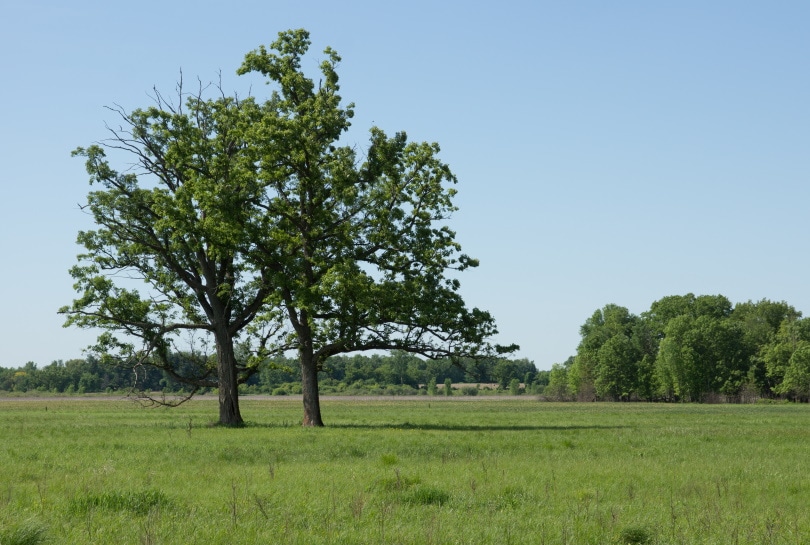
| Max Height and Spread: | 98–160 ft., 10 ft. |
| USDA Hardiness Zone: | 3–8 |
| Lifespan: | 200 to 300 years |
One of the different types of oaks you can come across in Kansas is the Bur oak. This tree is native to the eastern parts of North America. It grows to be among the largest deciduous trees in the state, but it takes quite a long time to grow to maturity.
The Bur oak has variable-shaped leaves that grow 7 to 15 centimeters in length and produces huge acorns of almost 5 centimeters. In fall, while other trees have strong hues of red, orange, and gold, the Bur oak leaves don’t undergo such a dramatic change. In spring, the tree blooms, producing greenish-yellow catkins.
This tree loves areas with a temperate climate and open spaces. It’s easy to spot the Bur Oak along waterways or where there’s a break in the canopy in dense forests.
2. Chinkapin Oak (Quercus muehlenbergii)
| Max Height and Spread: | 30–60 ft., up to 40 ft. |
| USDA Hardiness Zone: | 3–9 |
| Lifespan: | 100 years |
The Chinkapin oak is also known as the yellow chestnut oak. This medium to large tree does well in parks or lawns, offering ample shade when it’s too sunny.
It produces dark-green leaves in spring. When fall comes around, all the leaves turn orange-brown before falling off. The tree also produces acorns, a delicacy to the wildlife nearby.
Chinkapin oaks have a slow to medium growth rate. They thrive in full sun exposure in and well-draining loamy sandy acidic soil. Still, it can easily adapt to different types of soils and conditions.
3. English Oak (Quercus robur)

| Max Height and Spread: | 40–60 ft., up to 59 ft. |
| USDA Hardiness Zone: | 5 |
| Lifespan: | over 500 years |
The English oak is also known as the common oak, native to Europe, but it’s widely cultivated in different regions across the world. It grows to be huge and broad, covering an extensive area.
It has many rugged branches and a wide-spreading crown. Its leaves can grow up to 10 centimeters long with several deep lobes and smooth edges, but they grow into a bush due to a lack of branches.
In spring, the huge oak will bloom, producing yellow catkins that spread pollen. It bears 2 to 2.5 centimeters long green acorns that ripen to brown. Acorns that fall from the tree sprout into small seedlings in spring.
4. Northern Red Oak (Quercus rubra)

| Max Height and Spread: | 60–75 ft., up to 45 ft. |
| USDA Hardiness Zone: | 3–8 |
| Lifespan: | over 300 years |
The Northern red oak comes from the red oak group and is native to Kansas and different parts of North America. This deciduous tree is also present across the world, thanks to its adaptive nature. It can be grown in gardens and lawns to provide ample shade in spring and summer.
Perhaps the best feature of the Northern red oak is its leaves, which turn a bright red in fall. The tree tolerates different soil conditions, but it does better in well-draining and fertile soil that’s moist during the growing season.
Birds and small animals love feasting on the Northern Red acorns. The tree’s wood is a favorite among woodworkers looking for durable heartwood. Its lovely shade makes it perfect for interior finishes and building furniture.
5. Shumard Oak (Quercus shumardii)
| Max Height and Spread: | 70–100 ft., up to 40 ft. |
| USDA Hardiness Zone: | 5–10 |
| Lifespan: | over 480 years |
Among the largest oaks in the world is the Shumard oak. This tree grows in the shape of a pyramid and tends to open up as it reaches maturity. It has a smooth and thick bark that’s gray to dark gray with deep furrows.
The tree blooms in spring, producing whitish green catkins from March to May. Its big size can house all sorts of small animals, birds and insects.
The Shumard oak is found in the wild near waterways, but it’s also possible to cultivate it. The reason is that this tree is adaptive and has medium-rate water requirements. It does well in moist soil, but it can also tolerate mild dry conditions.
Walnut
6. Carpathian English Walnut (Juglans regia)
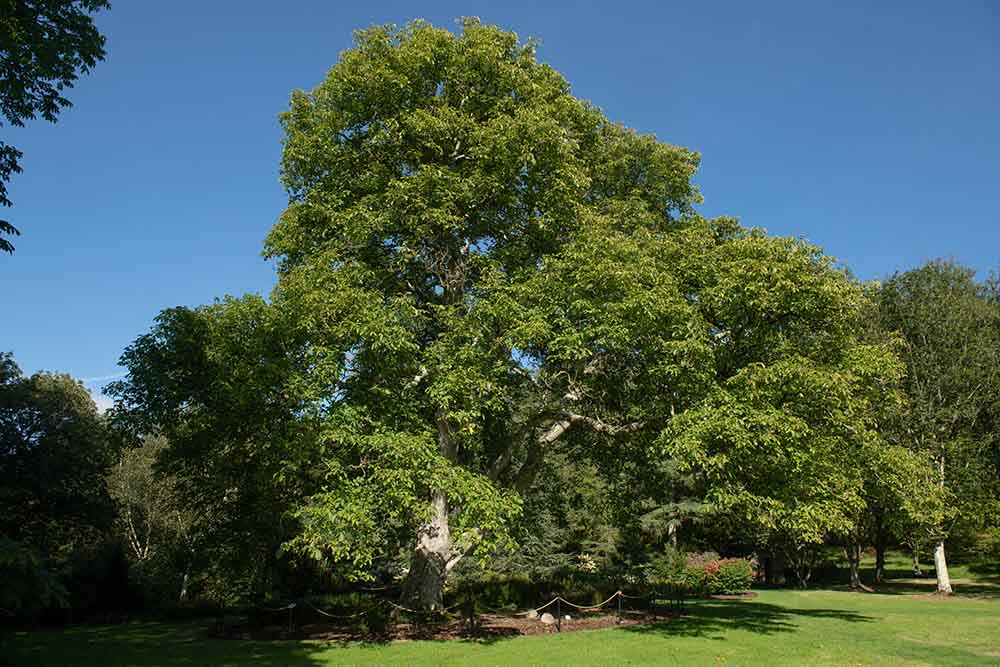
| Max Height and Spread: | 40–60 ft., 40–60 ft. |
| USDA Hardiness Zone: | 4–9 |
| Lifespan: | over 150 years |
The story goes that the Carpathian English walnut was once a valuable gift presented to the King of Greece. The King of Persia began this tradition, which saw the walnuts spread from the Carpathian Mountains to the rest of the world.
This tree grows to produce large dark-green rounded leaves that fall off in fall after turning yellow. At a certain age, the tree will start producing brown edible walnuts.
Carpathian English walnuts grow at a fast pace under maximum sun exposure in spring and summer. The best soil for these giant trees is moist well-draining acidic-alkaline loamy sandy soil. It’s also a bit drought-tolerant.
7. Black Walnut (Juglans nigra)
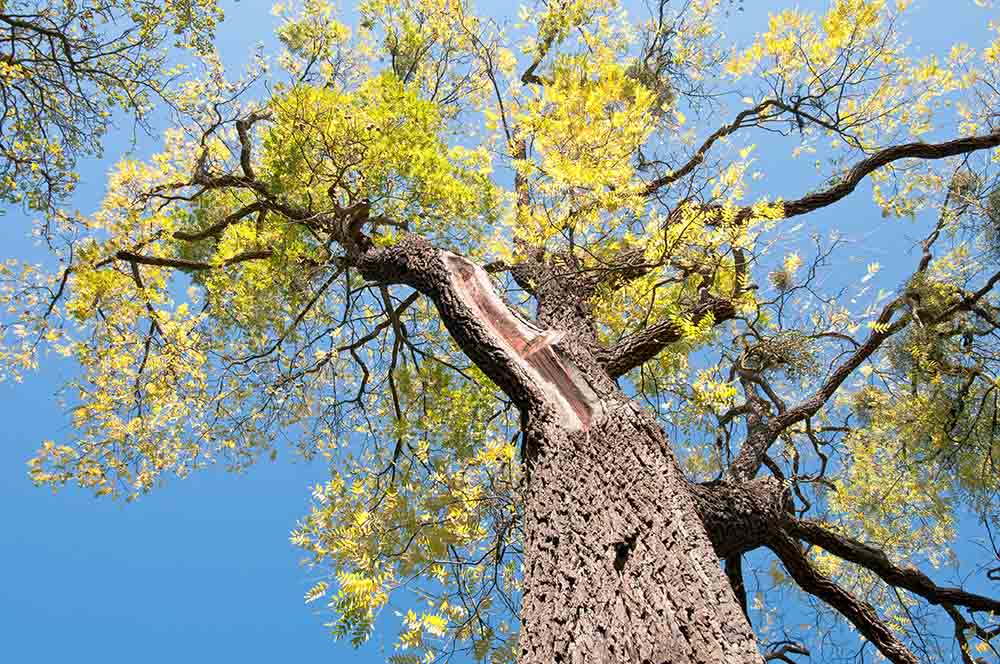
| Max Height and Spread: | 75–150 ft., 50–75 ft. |
| USDA Hardiness Zone: | 4–9 |
| Lifespan: | up to 250 years |
The black walnut tree is also known as the Eastern black walnut. It is native to North America. It is popular among lumberjacks because it’s easy to work on and has an attractive deep brown shade.
This tree also produces some tasty sought-after walnut seeds with a high level of antioxidants and polyunsaturated fatty acids. As a result, they have several health benefits, including lowering the risk of diabetes and heart diseases.
One point to note about the black walnut tree, especially if you want to plant it in a garden, is its poisonous roots that may affect certain plant species; keep a wide gap between it and such plants.
Elm
8. Lacebark Elm (Ulmus parvifolia)
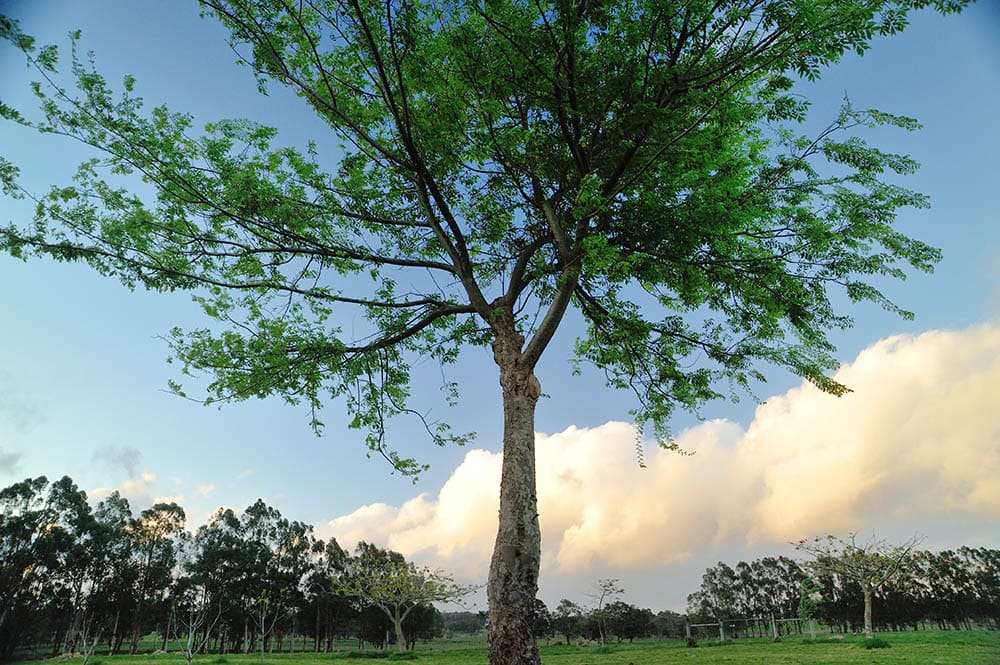
| Max Height and Spread: | 40–50 ft., 35–45 ft. |
| USDA Hardiness Zone: | 5–9 |
| Lifespan: | 50 to 150 years |
The lacebark elm is also known as the Chinese elm, and it is native to eastern Asia. It has one of the most graceful facades with a wide crown.
Every spring, the tree produces small leaves measuring 2 to 5 centimeter. There are times the tree can retain its leaves until late December before they fall off. However, most change from dark-green to yellowish-reddish-purple in fall.
This is a fast-growing tree grown for ornamental or shade purposes in a garden or lawn. Pick a spot that gets as much as 6 hours of direct sun exposure and well-draining soil. The tree can tolerate floods and drought.
Maple
9. Amur Maple (Acer ginnala)

| Max Height and Spread: | 15–20 ft., 15–30 ft. |
| USDA Hardiness Zone: | 3–8 |
| Lifespan: | 20 to 30 years |
Among the different species of maple trees in Kansas is the Amur maple. It’s among the smallest maple trees; it looks more like a large shrub. It is native to Asia, but it is widely cultivated in many places, including the US. It is ideal for a small garden or yard.
It produces amazing fall colors as the leaves change. It has dark-green leaves in spring. As fall begins, these leaves change hues to red and orange. If you grow many of these maple trees together, you can marvel at the amazing colors every fall.
It thrives in full sun and adapts well to different soil conditions. It will grow fast and strong on moist soil – it even tolerates cold climates with snow and ice.
10. Box Elder Maple (Acer negundo)

| Max Height and Spread: | 30–80 ft., 3ft. 3 in. |
| USDA Hardiness Zone: | 2–9 |
| Lifespan: | 75 to 100 years |
Box Elder maples are found in many parts of the US, including Kansas. They are among the fastest-growing maple trees; they can grow from seedlings. In the wild, you’re likely to find the Box Elder Maple near springs and rivers.
The tree has soft and brittle branches. Each branch can have about 6 to 8 leaves. It blooms to produce yellow-green flowers.
If you wish to plant it in a garden or on a lawn, pick spots with lots of shelter from the wind. These trees break easily and are also affected by ice storms in winter but will thrive in areas with a mild climate.
11. Silver Maple (Acer saccharinum)
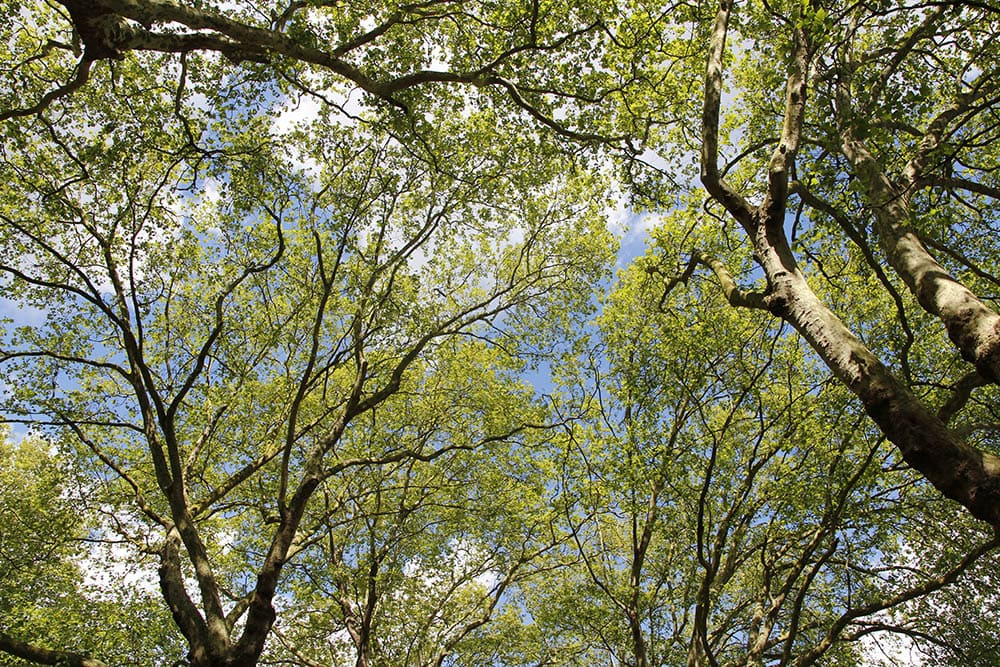
| Max Height and Spread: | 50–80 ft., 35–50 ft. |
| USDA Hardiness Zone: | 3 through 9 |
| Lifespan: | over 130 years |
Do you want a fast-growing maple tree to cultivate in Kansas? Check out the silver maple, which grows rapidly and tends to shimmer when there’s a breeze. This beautiful maple is also known as the silverleaf maple, soft maple, water maple, or swamp maple.
It’s tolerant with a vigorous root system that keeps it going even during dry conditions. In autumn, notice the pale-yellow leaves that look magical on a windy day. Unlike other maples, the silver maple leaves will drop earlier.
If you wish to plant the silver maple, pick spots that get partial shade but also experience full sun for a better part of the day. The tree prefers well-draining moist soil. It can also withstand flooding.
Conifers
Conifers grow better in cold climates and are adaptable to harsh winter conditions. Their leaves remain evergreen and don’t fall off in autumn. In spring, conifers don’t bloom to produce flowers; instead, they have male and female cones for reproductive purposes.
Many conifers have needle-like leaves. As the seasons change, conifer leaves protect themselves from harsh snow using a waxy substance that prevents freezing. Below are the types of conifers in Kansas.
Pine
12. Eastern White Pine (Pinus strobus)

| Max Height and Spread: | 230 ft.,1.6m |
| USDA Hardiness Zone: | 3–8 |
| Lifespan: | 200 to 250 years |
Eastern white pines are also known as soft pine, Northern white pine or the white pine. The trees are native to eastern parts of North America. It is a valuable species grown for commercial purposes.
The tree has needle-like blue-green leaves that can be 5 to 13 centimeters long. It produces 8 to 16 centimeters long slim cones. The tree takes 3 to 5 years to experience a spike in cone production.
The Eastern white pine grows fast and is a fire-resistant species. It thrives in direct sunlight and well-draining acidic soils. This is a drought-tolerant species that remains green during dry conditions.
13. Mountain Pine (Pinus Mugo)

| Max Height and Spread: | 2–5 ft., 3–5 ft. |
| USDA Hardiness Zone: | 2–7 |
| Lifespan: | up to 50 years |
The mountain pine is also known as the dwarf mountain pine, creeping pine or the bog pine. It is native to Central and Southeast Europe, but it thrives in spots with high elevation.
It has dark-green needle-like leaves that make it ideal for yards and lawns. The trees make amazing landscaping plants given their height and capacity to grow wider. In fact, there’s a wide variety of mountain pine cultivars.
You can plant the tree in a wide variety of soils but avoid dense clay. It thrives in cold climates and can grow well even in an urban area with partial shade.
Cedar
14. Eastern Red Cedar (Juniperus virginiana)
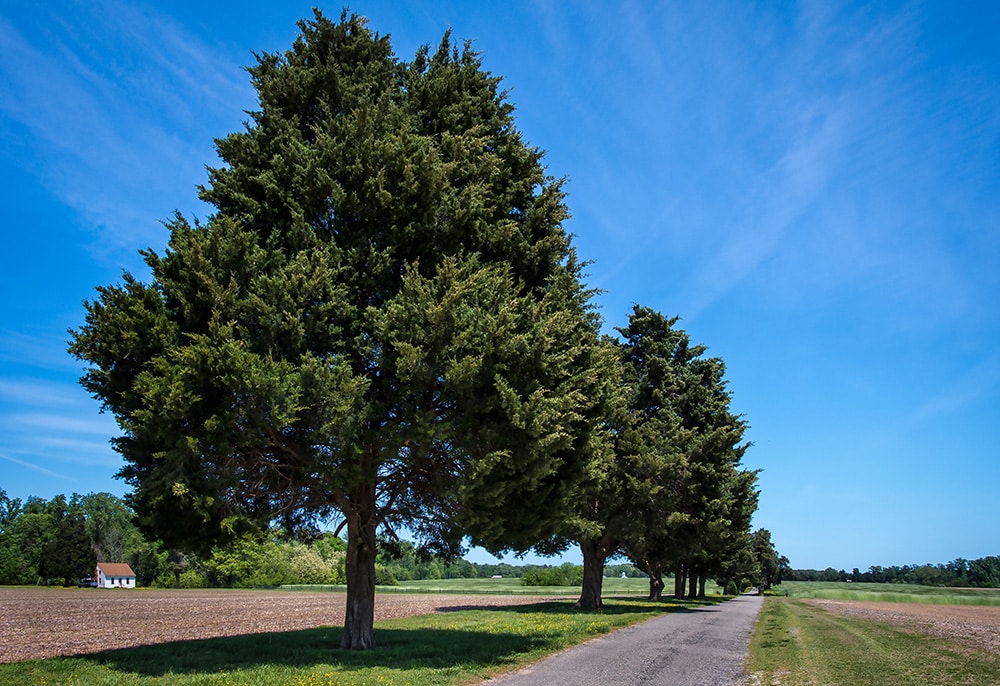
| Max Height and Spread: | 50–100 ft., 3ft 3 in. |
| USDA Hardiness Zone: | 6–8 |
| Lifespan: | 1000 years |
The Eastern red cedar is also known as the Virginian juniper, Eastern red cedar, and red juniper. It is a slow-growing conifer that can remain as a large bush for a long time.
The tree grows scale-like adult leaves that are 2 to 4 millimeters long, and needle-like young leaves that are 5 to 10 millimeters. It also produces dark-purple cones with a white wax cover resembling berries.
Most folks consider the Eastern red cedar an invasive species. However, it’s a good tree option when reclaiming barren land. This tree has fragrant wood but it is fire intolerant.
Juniper
15. Rocky Mountain Juniper (Juniperus scopulorum)
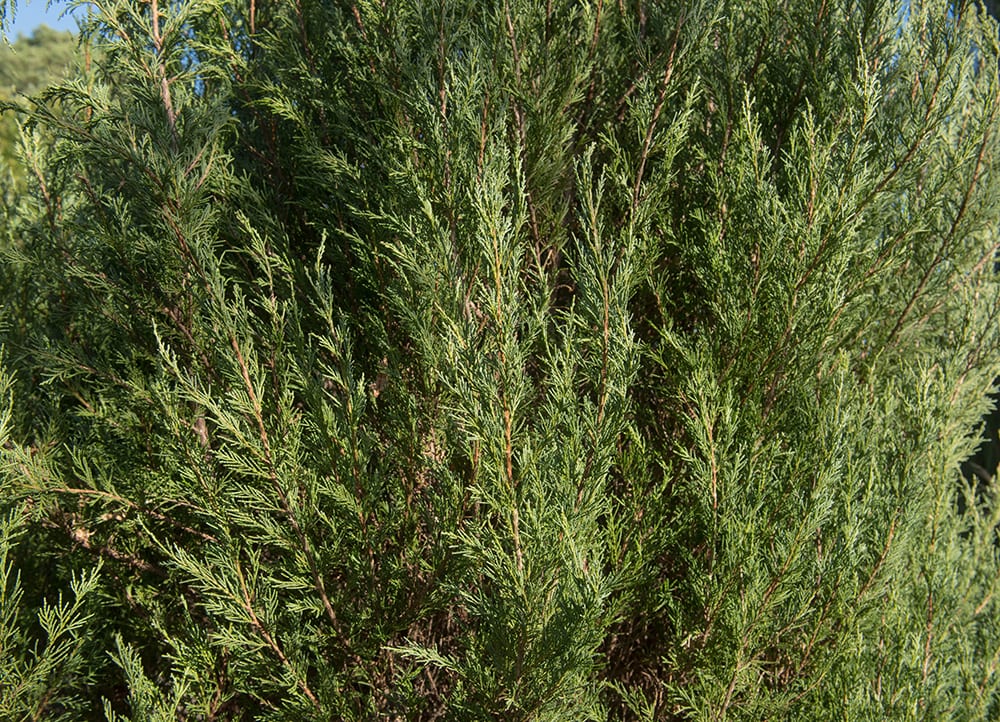
| Max Height and Spread: | 49 ft., 2 m |
| USDA Hardiness Zone: | 4–9 |
| Lifespan: | 250 to 300 years |
Another conifer native to the western parts of North America is the Rocky Mountain juniper. It is drought/cold-tolerant, and it can withstand hot summers and harsh icy winters. It can be grown indoors as a bonsai tree.
This tree needs proper care and management, including frequent pruning from an early age. It thrives in full sun exposure, well-draining soils, and warm-dry temperatures. It’s possible to grow seedlings from seeds and transplant them later. Also, you can do propagation using cuttings.
16. Chinese Juniper (Juniperus chinensis)

| Max Height and Spread: | 5–10 ft., 15–20 ft. |
| USDA Hardiness Zone: | 3–9 |
| Lifespan: | up to 20 years |
The Chinese juniper is native to East Asia. It’s commonly found in China, Far East Russia, Korea, Myanmar, and Japan. The tree grows in a cone shape but you can prune it to reduce the number of branches towards the base.
It has small needle-like leaves measuring 5 to 10 millimeters. It produces blue-black cones that resemble berries. In spring, the tree spots a whitish bloom.
It’s a lovely ornamental tree with more than 100 cultivars, thanks to its rising popularity. This can become an excellent landscaping tree, but it also grows in the wild, being a cold-tolerant species.
17. Sargent Juniper (Juniperus sargentii)

| Max Height and Spread: | 1–2 ft., 8–10 ft. |
| USDA Hardiness Zone: | 5–8 |
| Lifespan: | up to 20 years |
The Sargent juniper is a slow-growing dwarf conifer that remains evergreen even as the seasons change. The tree has bluish-green needle-like leaves. It also produces berries during the growing season. Having it in an urban setting is ideal since it is low-maintenance. It can be a great addition for landscaping.
 Deciduous Conifer
Deciduous Conifer
A deciduous conifer tree has a share of both worlds. There are a few deciduous conifers growing in Kansas. Their features resemble both species like the needle-like green leaves popular with evergreens.
However, in fall, the evergreen leaves change color and fall off. The color change can be significant or simple depending on the specific tree. However, all deciduous conifers thrive in colder regions. Below are the deciduous conifers growing in Kansas.
Cypress
18. Bald Cypress (Taxodium distichum)
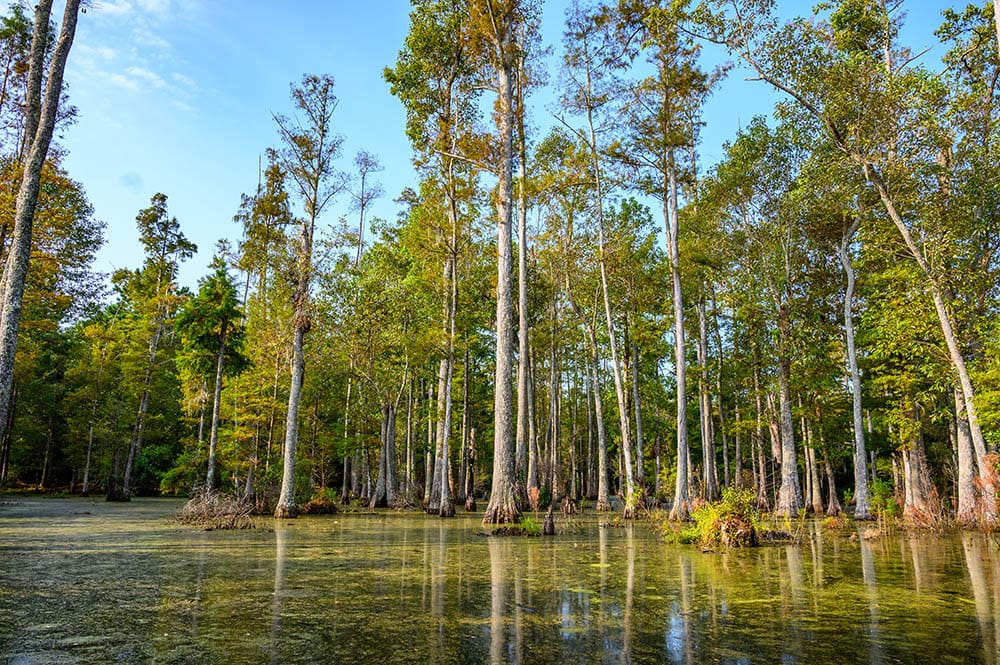
| Max Height and Spread: | 35–120 ft., 3–6 ft. |
| USDA Hardiness Zone: | 4–10 |
| Lifespan: | up to 600 years |
There are few tree species that fall under the category of deciduous conifers. Among them is the bald cypress, also known as the swamp cypress. This tree is native to the southeastern parts of North America; it can thrive in different soil conditions.
The bald cypress is slow-growing, but it can live for quite long. As it matures, you start to notice the formation of cypress knees on the main trunk. It has needle-like green leaves. However, unlike many conifers, these leaves turn copper red or yellowish in fall. Later, they will fall, leaving the tree bare until the next spring.
It does well in full sun exposure and some partial shade in the afternoon.
Conclusion
Kansas doesn’t disappoint when it comes to the wide variety of tree species that dot the state. Here, you come across conifers that are evergreen, deciduous trees whose leaves fall off in autumn, and deciduous conifers with features from both types of tree species.
A majority of these trees thrive in full sun exposure for a better part of the day. Some are cold and drought tolerant, while many can thrive in different soil conditions. The good news is that many of these trees can grow in a garden or lawn, but always consider the maximum height and spread.
Featured Image Credit: Scott, Pixabay
See also: 24 Types of Trees in Illinois (with Pictures)
Contents



